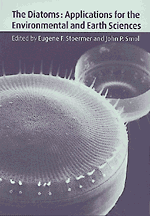Book contents
- Frontmatter
- Contents
- Contributors
- Preface
- Part I Introduction
- Part II Diatoms as indicators of environmental change in flowing waters and lakes
- Part III Diatoms as indicators in extreme environments
- Part IV Diatoms as indicators in marine and estuarine environments
- Part V Other applications
- Part VI Conclusions
- 24 Epilogue: a view to the future
- Glossary, and acronyms
- Index
24 - Epilogue: a view to the future
Published online by Cambridge University Press: 16 January 2010
- Frontmatter
- Contents
- Contributors
- Preface
- Part I Introduction
- Part II Diatoms as indicators of environmental change in flowing waters and lakes
- Part III Diatoms as indicators in extreme environments
- Part IV Diatoms as indicators in marine and estuarine environments
- Part V Other applications
- Part VI Conclusions
- 24 Epilogue: a view to the future
- Glossary, and acronyms
- Index
Summary
At this point it is appropriate, if not necessarily wise, to attempt a brief view into the future. By its very nature, scientific research is not usually kind to those who would attempt to plan it, or even forecast its future direction.
Be this as it may, it seems to us that some of the immediate future directions in applied diatom studies seem almost foreordained. It is very clear that a good deal of effort needs to be devoted to the formalities of taxonomy and nomenclature, which have been sadly neglected for the past century. Great strides have been made very recently in the alpha level taxonomy of diatoms (e.g., Lange-Bertalot & Metzelin, 1996). It has also become much more common for diatomists to document their work in published iconographs (e.g., Douglas & Smol, 1993; Cumming et al., 1995) followed by deposition of properly vouchered material from major studies. Even more promising, the application of modern systematic techniques to diatoms (e.g., Kociolek & Stoermer, 1989; Kociolek et al., 1989; Theriot & Stoermer, 1984; Williams, 1985) is becoming more and more established. However, it is also true that relatively few diatomists are formally trained systematists. The very increase in interest in diatom taxonomy, particularly that part fueled by practical applications, has left behind it a virtual morass of nomenclatorial problems. Unfortunately, many well-intentioned attempts to alleviate the situation have resulted in inappropriate synonymies, conservations, and circumscriptions, which only serve to further complicate it.
- Type
- Chapter
- Information
- The DiatomsApplications for the Environmental and Earth Sciences, pp. 447 - 450Publisher: Cambridge University PressPrint publication year: 1999



